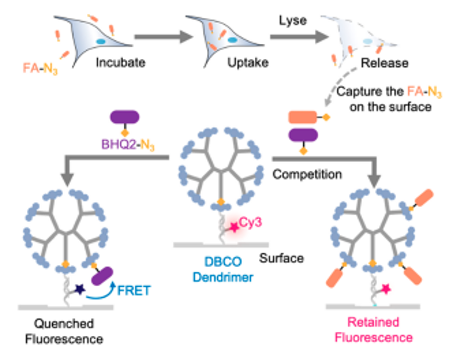Novel Assay Using Azide-Capture Agents
Background
Abnormal metabolism is frequently observed in cancer and other diseases, but the regulatory mechanisms and therapeutic implications remain unclear. For example, increasing evidence demonstrates cancer survival and metastatic spreading often require exogenous fatty acid (FA) uptake and consumption. Unfortunately, existing solutions to measure FAs are expensive or use large fluorescent groups that compromise assays, and none are readily compatible with protein analysis in bulk or single cells. Thus, new materials and methods are needed to assay fatty acid uptake, and more generally, to simultaneously profile metabolic activity and protein levels at single-cell resolution.
Brief Description
Prof. Min Xue from the University of California, Riverside and Prof. Wei Wei from the Institute for Systems Biology have developed materials and methods to detect and measure FA uptake alone or simultaneously with protein detection in multiplex down to single-cell resolution. FA analogs with an azide functional group mimics natural FAs. Specially designed small polymers are used to efficiently assay the FA analogs and produce fluorescent or chemical signals upon binding. The technology is compatible with protein analysis and generally applicable to other metabolites and proteins. 
Fig 1: Schematic of the UCR-ISB method for detecting fatty acid uptake from single cells.
Applications
- To assay for azide-modified molecules, such as FAs, at bulk or single-cell level.
- To analyze cellular metabolism by integrating metabolic and proteomic readouts.
Patent Status
| Country | Type | Number | Dated | Case |
| United States Of America | Published Application | 20250003959 | 01/02/2025 | 2021-841 |
Related Materials
Contact
- Grace Yee
- grace.yee@ucr.edu
- tel: View Phone Number.
Other Information
Keywords
fatty acids, assay, azide, single cell assay, polymer, dendrimer, DBCO
